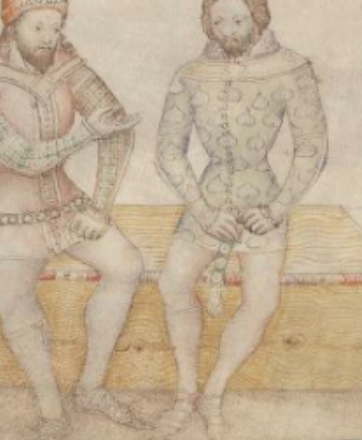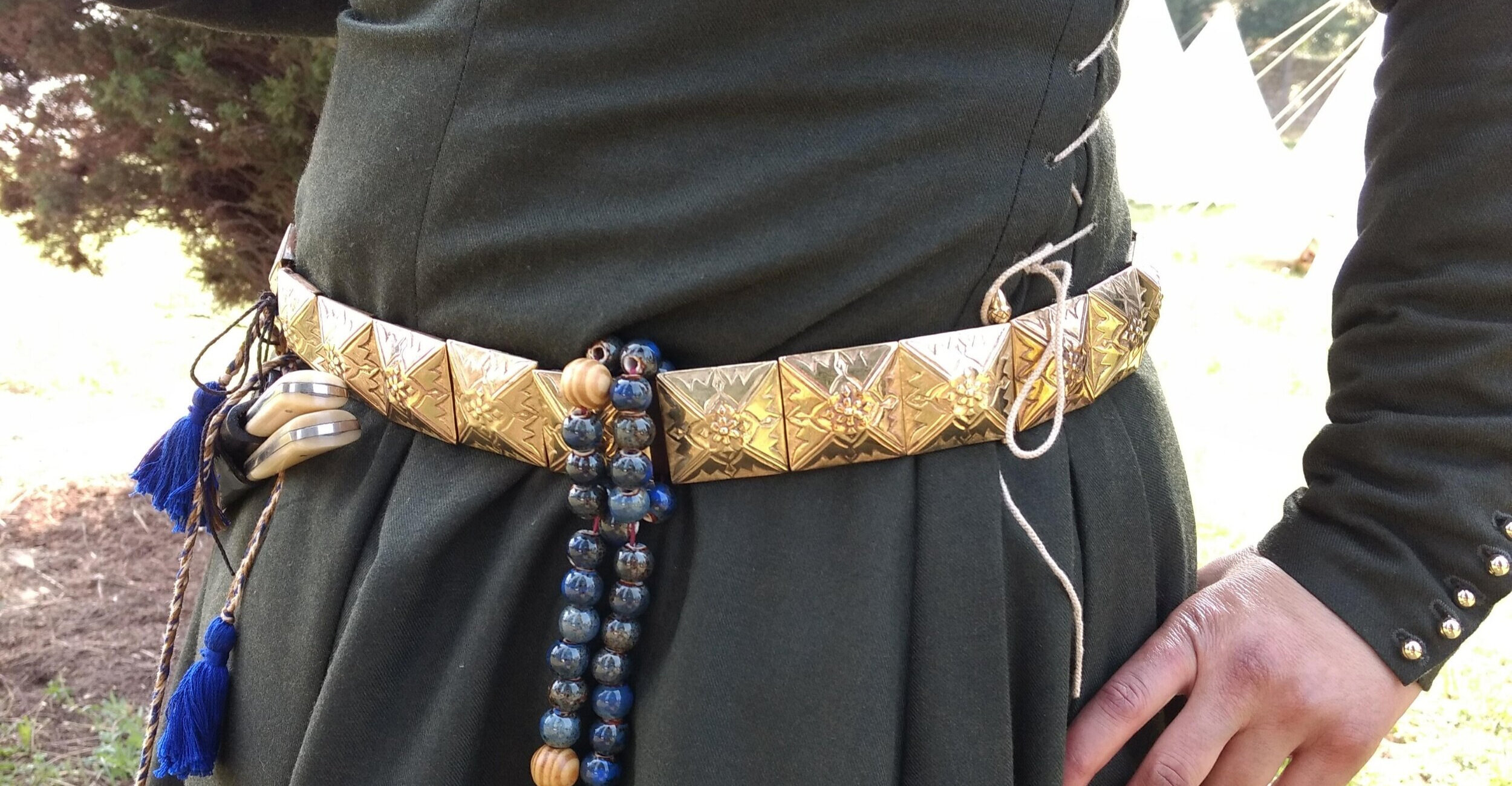All about (medieval) belts
Aurora Simmons
It’s been a long time since I blogged, over a year in fact, but I’m going to try to clean up my act and get back on the horse, starting with a little post about medieval belts, since as spring comes, I am starting to think about my upcoming projects for the reenacting season.
I love reenacting the 14th century so much, in part because the possibilities for belts and bling are pretty much infinite.
Knights were often known to wear two belts at a time, a fancy one, and one to hold up their sword. Medieval folks also used things like horn baldrics, sword scabbard suspension rigs, armour closure straps, garters and more, so the need for belt like objects when reenacting the medieval period is near infinite. No one has asked me to make really fancy medieval horse furniture yet, but hope springs eternal.
A lot of my belt research has come from visual art sources from the period like paintings, manuscripts and effigies, but I’ve also been lucky enough to examine a few originals or photographs of originals from museum collections, and I even have a small collection of original belt plaques and buckles which have given me great insight. I’ve also found the book Dress Accesories, 1150 c to 1450 c - Medieval finds from excavations in London to be an invaluable resource.
Knights wearing belts in battle
Example of an effigy
More knights, with many fancy straps.
Most outfits for men in the 14th century included a belt, to hold purses or weapons, and to cinch the loose over-garments they often wore. Women wore belts more situationally depending on whether they were dressed in formal wear, or working clothes. The belt was often used to raise long skirts off the ground when a woman needed less restricted movement and were used to support purses, the pockets of the 14th century. They were also used to cinch loose over-garments, just like for men.
Some fancy lads wearing belts in the Giron le Courtois manuscript.
A nice lady wearing a belt from Tacuinum Sanitatis
Sometimes belts were tablet woven to create bright patterns in fabric instead of leather. I had the pleasure of working with a friend to create one of these in silk a few years ago. She did the weaving and I assembled the metal fittings which I then sewed on.
Tablet woven silk belt with extra bling
The full ensemble.
Belts were often decorated. Sometimes with a texture embossed into the leather, sometimes with closely spaced metal fittings. They were usually brightly coloured, either in dyed leather or woven fabric. I have a bunch of reproduction embossing stamps I’ve made in brass, and hammering a stamp into wet leather is deeply satisfying.
Belts were sometimes used to denote status, as with the heavily decorated knights belts. Sometimes they had enamelled heraldic plaques riveted or sewn to a backing or heavy, all metal plaques that are often seen on Germanic effigies from the period. Plaques could be made in a copper alloy, and either left alone, or plated silver or gold. But they were also made in more precious metals such as silver, or even gold for high status people. It was a great display of wealth and there have even been accounts of knights removing a belt plaque to use it as currency.
Another fancy lad from Giron le Courtois
Original heraldic enamelled belt plaques
A reproduction belt I made with enamelled plaques on silk velvet.
A very serious plaque belt I reproduced in 2018
I’m proud to say that I’ve recreated all kinds of belts from the medieval period, and I enjoy it so much I have started making modern belts as well. Sometimes they draw on elements of historical belts for a modern twist on an historical theme. I own around 3 medieval belts of my own and I’m working on a 4th. Really, you can never have too many belts.
An embossed belt I made myself a few years ago. It’s been in some rainstorms since then, and it’s a little worse for wear now.
Next time, I’ll talk about how to care for belts, and leather in general. Hopefully it will be in the next 2 weeks rather then over a year from now.
If you’d like to see a selection of my modern and historical belts, head over to my etsy store
If you want to stay up to date with what I’m doing on a day to day basis, you can check out my Instagram or Facebook.
If you want to learn more about my historical reenacting organization, click here.
If you want to be notified about events, new blogs posts and sales, you can join our mailing list.
Feel free to leave a comment if you have any thoughts or questions.












